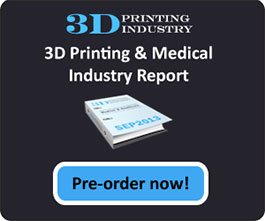In the news about 3D printing as it relates to the field of medicine, from 3D printed pills to prosthetics, it might not occur that the committees that oversee and approve such applications for human use might dabble in 3D printing themselves. Of course, I’m referring to the US’s own Food and Drug Administration (FDA), the gatekeeper that decides the medications and technologies that make it to market.
Aside from giving 3D-printed medical devices their stamp of approval – such as Oxford Performance Materials’ 3D-printed cranial implant and the 3D-printed bronchial splint from the University of Michigan – the FDA has actually worked with additive manufacturing hands-on. In order to keep up with cutting-edge developments in any field they might regulate, the FDA must also understand new technological innovations. For that reason, the FDA’s blog explains, 3D printing has been used at two of the agency’s facilities as part of the Office of Science and Engineering Laboratories.

Now that additive manufacturing has made its way from cutting edge design firms to bureaucratic agencies, there’s no doubt that the technology is quickly becoming ubiquitous. And, because the medical industry is one of the areas that will be most rapidly transformed by 3D printing, it may be difficult to navigate the vast changes and investment opportunities brought about. Hopefully, 3DPI’s first industry report, which covers additive manufacturing as it relates to developments in healthcare, will be a source of comfort to you in this exhilarating – and, at times, confusing – world of 3D printing.
Source: FDA Voice



